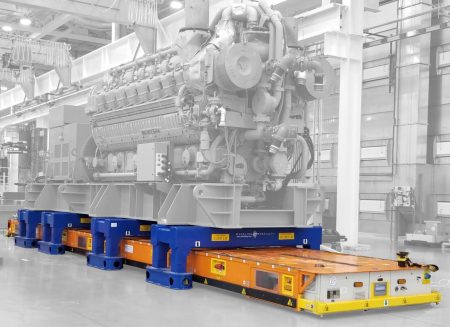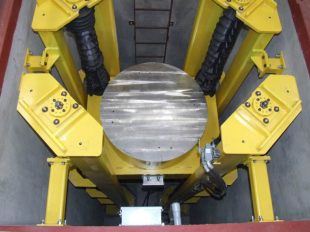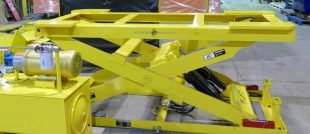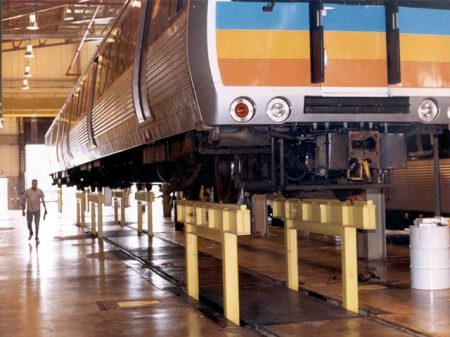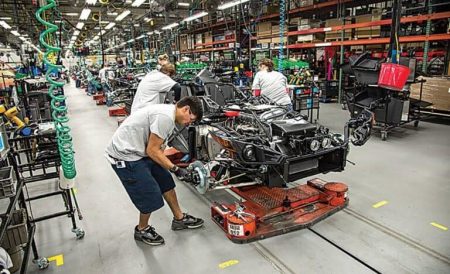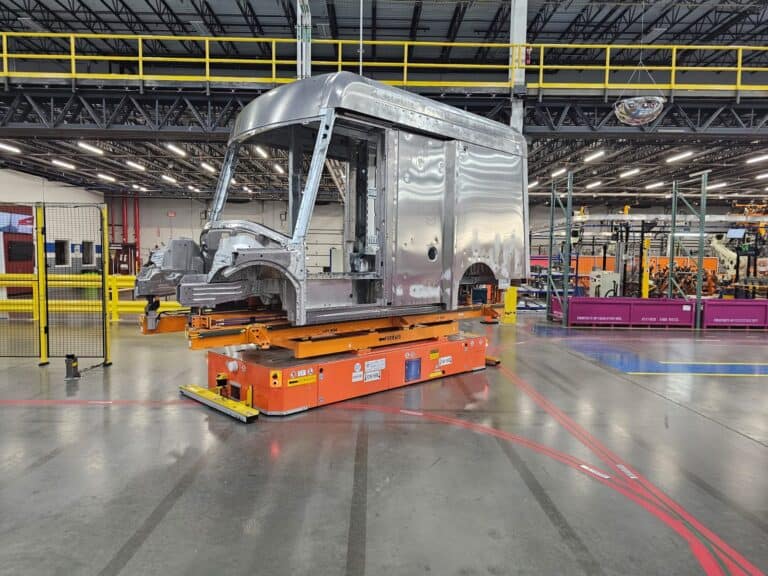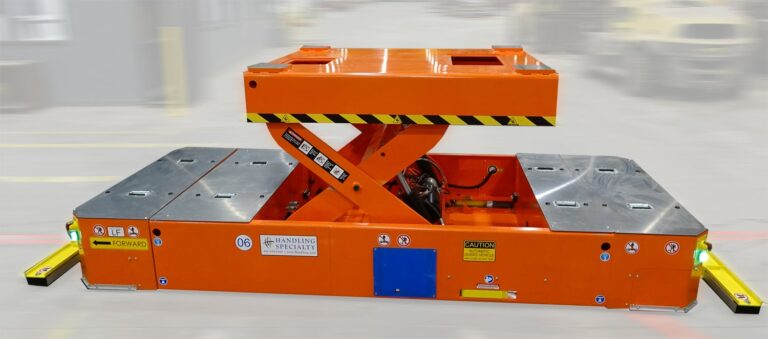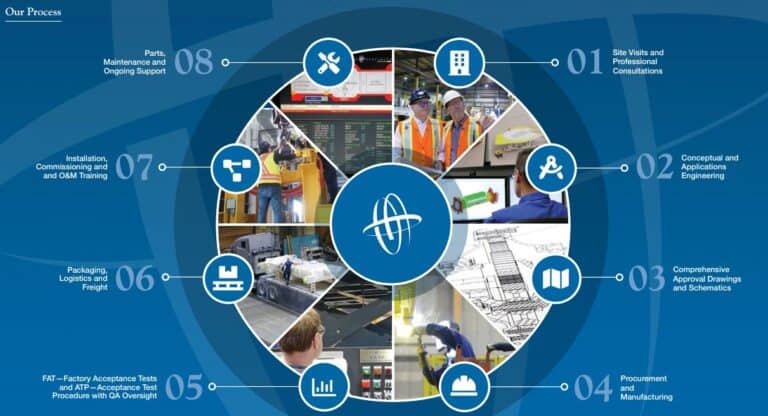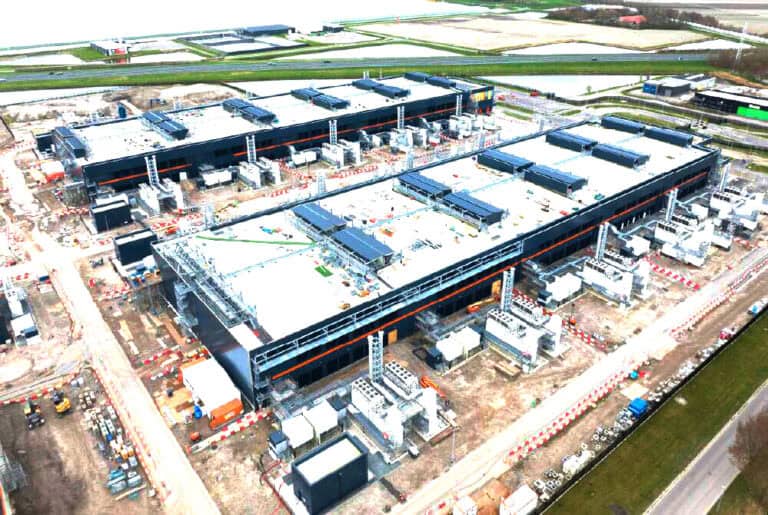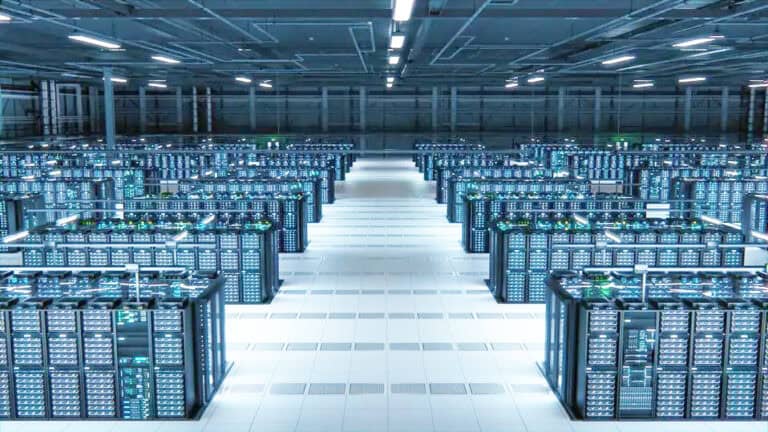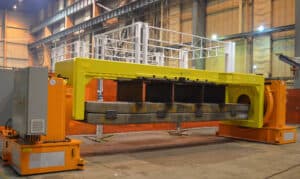Space limits in manufacturing, maintenance repair operations (MRO), and assembly can make it hard to work efficiently. Industrial mechanical scissor lifts have become an excellent solution to this problem. They help move things vertically and make better use of space. Using scissor lifts can make manufacturing easier and increase overall productivity.
Understanding Industrial Mechanical Scissor Lifts
Industrial mechanical scissor lifts are platforms that can be raised and lowered to a desired height. At their core, they utilize a specialized system of crossed supports that resemble scissors. This innovative design provides them with excellent stability and a strong lifting capability, making scissor lifts ideal for various industrial applications. Unlike regular forklifts or cranes, scissor lifts are smaller and more maneuverable, which enables them to fit into tight spaces in busy manufacturing areas.
As industries evolve and require more space, industrial mechanical scissor lifts are experiencing rapid growth. These lifts can accurately and safely raise materials, tools, and workers to different heights. This ability makes them important tools for saving space and improving factory safety.
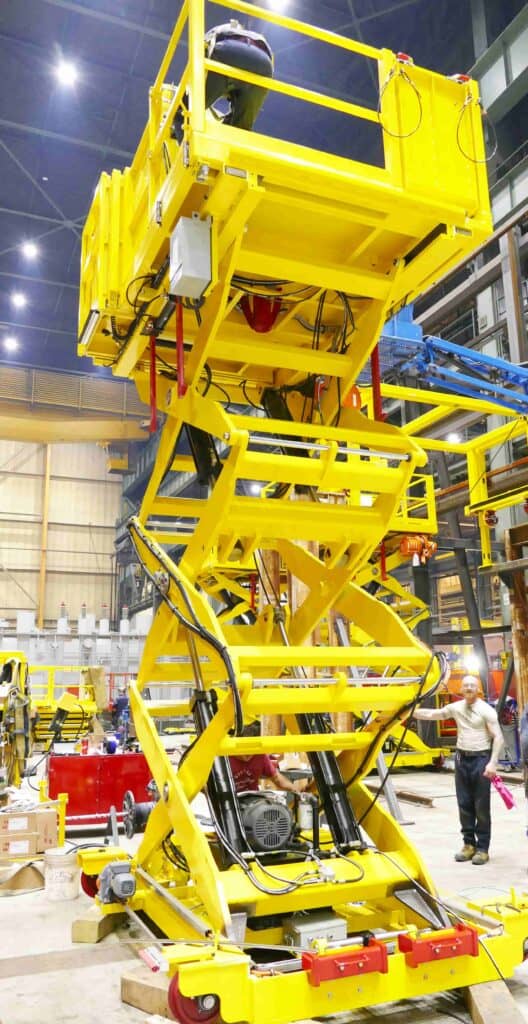
The Engineering Behind Mechanical Scissor Lifts
The operation of an industrial scissor lift is based on its specific mechanical components. The platform rises when the scissor arms extend or lower. This movement is powered by either hydraulic systems or electric motors.
Hydraulic scissor lifts utilize a pump to move fluid into cylinders, creating pressure that helps the arms extend. Electric motor systems use electric motors to turn screws or gears, which then move the scissor arms.
The lifting ability of a mechanical scissor lift depends on the size and strength of the scissor arms and how powerful the hydraulic or electric system is. To stay stable and avoid tipping over, scissor lifts can be counter-sunk or lagged to the shop floor and have outriggers or base extensions.
Types of Industrial Scissor Lifts and Their Uses
Industrial scissor lifts come in many types to fit different needs. Custom hydraulic scissor lifts are engineered for strength and can lift heavy loads with ease. They are often used for complex tasks, such as loading and unloading trucks or lifting machines at construction sites. On the other hand, electric scissor lifts operate quietly and require less maintenance, making them ideal for indoor areas such as assembly plants and factories.
Some mechanical scissor lift models are specifically designed for certain tasks. For example, aerial work platforms include tooling, controls, and safety railings. They are helpful for tasks such as assembling parts at heights. Additionally, some scissor lifts feature special components, such as explosion-proof parts or those that can withstand high temperatures, making them suitable for use in demanding environments.
Vertical Lift Solutions for Modern Manufacturing
Vertical lift solutions, notably industrial mechanical scissor lifts, have revolutionized the manufacturing process. These lifts help address space issues by enabling manufacturers to maximize the use of vertical space. This helps increase workplace ergonomics, improving personnel health and safety.
By incorporating scissor lifts into their processes, manufacturers can reap numerous benefits. These include better productivity and increased safety. For instance, in assembly plants, scissor lifts can help workers reach high shelves or platforms, increasing the efficiency of the assembly process. In factories, scissor lifts can be used to move heavy equipment or materials to different levels, reducing the risk of injury. These lifts are essential for meeting the changing needs of today’s manufacturing.
Maximizing Floor Space with Vertical Storage
In factories, space is often limited. It is crucial to maximize vertical access. Industrial scissor lifts enable manufacturers to utilize vertical space more effectively. They allow workers to access high storage racks, shelves, or platforms safely and easily, allowing more items to be stored in the same area.
Using vertical space helps solve space constraints. It also makes things more organized and improves inventory management. When storage is optimized at heights, there is less need for large storage rooms, which frees up floor space for production lines and equipment. The result is a more efficient workflow. Productivity can increase while wasting less space.
Case Studies: Effective Space Management in Manufacturing
Numerous case studies underscore the transformative impact of integrating scissor lifts to overcome space constraints in manufacturing. For instance, a leading automotive manufacturer successfully increased their assembly capacity by 40% after incorporating scissor lifts into their operations. This allowed them to work vertically, freeing up significant floor space for assembly lines. Such success stories inspire and motivate other manufacturers to consider scissor lifts as a solution to their space limitations.
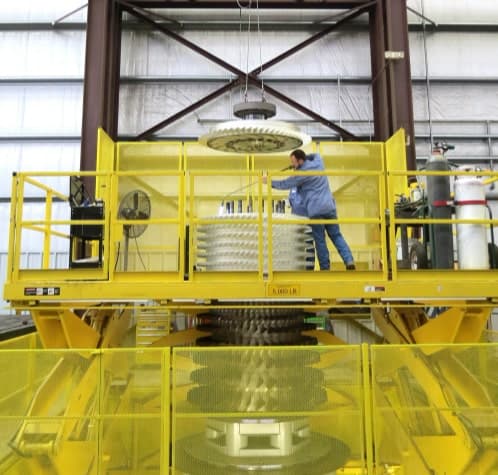
Optimizing Storage Areas with Scissor Lifts
Scissor lifts are essential tools in factories. They help utilize space more efficiently and make storage areas easier to access. By moving easily through small areas, scissor lifts allow for the intelligent placement of shelves and storage units. This increases the amount you can store without making it difficult to access items.
Scissor lifts can also move items up and down between different storage levels, making it easier to move goods inside a warehouse or factory.
Navigating the Challenges of Limited Space
Manufacturing plants can be tricky when dealing with limited space. Custom-engineered scissor lifts have been made to tackle these issues. Their smaller size enables them to work effectively in tight spaces without requiring extensive walkways or open areas. This is particularly helpful for older plants that were not designed to work with new equipment.
With customization options, these lifts can be better suited for narrow spaces. Handling Specialty offers custom models with smaller platforms or lower heights, making them well-suited for special needs.
Custom Scissor Lift Solutions for Unique Spaces
Many manufacturers recognize that no two manufacturing spaces are identical. They provide custom scissor lift solutions tailored to various uses and unique requirements. This customization can go beyond just size and weight capacity. It also includes platform shape and size, control systems, safety features, and even paint colors to match the current equipment. Customizing a scissor lift involves a detailed assessment of the manufacturing space and the specific operational needs. This ensures that the lift is perfectly suited to the job it needs to do.
For example, businesses with low ceilings might choose a low-profile scissor lift. This type works well in tight vertical spaces. Other custom options include platform extensions for larger equipment, rotating platforms for enhanced access to work areas, or explosion-proof components for use in hazardous environments.
Safety Protocols for Operating Scissor Lifts
Scissor lifts have many benefits in manufacturing. However, safety must be the top priority when using them. It is essential to have strict safety rules. Operators need to know how to use the lift properly. They should receive training to use the equipment safely.
Regular checks on the lift are necessary to identify and address any issues that could compromise safety and cause downtime. By focusing on safety, manufacturers can reap the benefits of scissor lifts and minimize the risk of accidents or injuries.
Essential Safety Measures for Operators
Operator safety is paramount when using scissor lifts to ensure a secure working environment. To maintain a safe working environment, manufacturers need to adhere to a set of safety rules that include:
- Pre-Operation Inspections: The Foundation of Safe Operation. Every operator should conduct a thorough inspection of the lift before use. This includes checking for any damage, wear, or leaks. By diligently performing these pre-operation inspections, operators demonstrate their commitment to safety and the responsible use of scissor lifts.
- Safe Lifting Practices: Loads must always be secured and spread evenly on the lift platform. Operators must adhere to the lift’s weight limit to prevent accidents and damage.
- Maintaining a Safe Working Area: Always keep the area around the lift clear of obstacles. The lift should be on stable, level ground. Use barriers like bellows, visual and audible queues, or signs to warn others about the lift’s operation.
- Appropriate Personal Protective Equipment (PPE): Operators should wear the proper PPE, like hard hats, safety glasses, and steel-toed shoes.
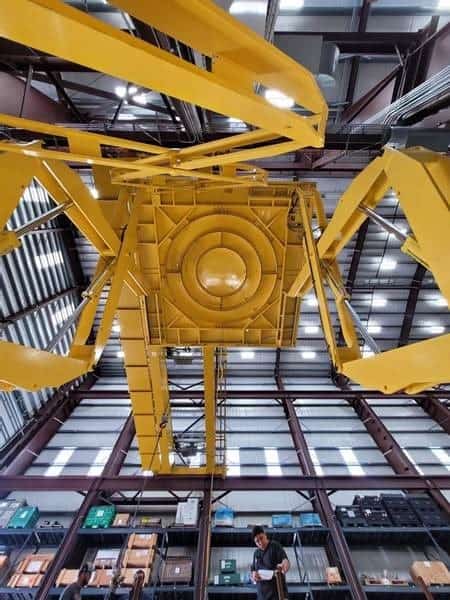
Training Programs and Certifications
Comprehensive training programs are vital. They help scissor lift operators learn how to use the equipment safely and competently.
These training programs should include these topics:
- Scissor Lift Types and Components: Educate operators on the various types of scissor lifts, their components, and the principles of their operation.
- Operational Procedures: Provide clear instructions on checks before use, safe operating procedures, emergency actions, and shutdown procedures.
- Load Handling and Safety: Train operators on how to handle loads correctly, including weight distribution, securing loads, and knowing the lift’s weight limit.
- Hazard Recognition and Avoidance: Assist operators in recognizing dangers associated with scissor lifts, including overhead obstructions, unstable ground, and electrical hazards.
The Economic Impact of Implementing Scissor Lifts
Utilizing industrial mechanical scissor lifts in manufacturing is beneficial for operations and has a substantial economic impact. These lifts help make better use of space. This enables manufacturers to operate more efficiently, reduce labor costs, and avoid costly facility expansions.
Scissor lifts also enhance safety in the work area, resulting in fewer accidents, which in turn leads to lower insurance costs and reduced downtime due to injuries or accidents.
Cost-Benefit Analysis of Scissor Lift Usage
Before investing in industrial scissor lifts, it is crucial to conduct a cost-benefit analysis. The initial costs include the purchase price of the lift, installation costs, and operator training. But, these upfront costs are often balanced out by long-term benefits such as:
- Increased Productivity and Efficiency: Scissor lifts facilitate easier handling and storage of materials, thereby enhancing operational efficiency and enabling workers to be more productive.
- Reduced Labor Costs: By automating certain tasks and streamlining processes, scissor lifts reduce the need for manual labor. This leads to savings over time.
- Enhanced Safety: Scissor lifts are safer than lift trucks. They reduce the likelihood of workplace accidents and associated costs, including insurance and downtime.
ROI: Improvements in Productivity and Efficiency
One of the significant economic benefits of using scissor lifts is the excellent return on investment (ROI) they provide. They help improve productivity and efficiency. Scissor lifts enable quicker and easier material handling, resulting in shorter production times, increased output, and improved business outcomes.
The time you save by using scissor lifts to reach high work areas or move materials quickly helps save money. Also, scissor lifts can help you use storage space more efficiently. This means you can free up valuable real estate for activities that generate more income, which all adds to the ROI.
Technological Advancements in Scissor Lift Design
The world of industrial scissor lifts is constantly changing. New technology enables better designs and improved functions. Modern scissor lifts are now equipped with enhanced safety features. They also utilize automation and data analytics, which enable them to perform better and work more efficiently.
These new advancements enable manufacturers to enhance their work environments. They can deal with new challenges and make their sites safer and more productive.
Automation and Robotics in Scissor Lifts
The use of automation and robotics is changing how scissor lift technology works. Automated scissor lifts are equipped with sensors and follow set paths in an assembly line. They can work independently, reducing the need for manual operation, making processes more efficient, and lowering the likelihood of human errors.
Robotics can be integrated into scissor lifts to create intelligent systems. These systems can adapt to various environments and move smoothly. They utilize advanced sensors and innovative programs to rise and lower at pre-programmed heights according to their work cell. This boost in productivity and safety is especially important in manufacturing settings.
Choosing the Right Scissor Lift for Your Manufacturing Needs
Choosing the right scissor lift is important. It helps you get the most out of it and ensures it fits your manufacturing needs. Consider several things, including its lifting capacity, platform size, lifting height, power source, and safety features.
Consulting with trusted scissor lift suppliers and experts can provide guidance to manufacturers. They can help you make informed choices that align with your work needs and budget.
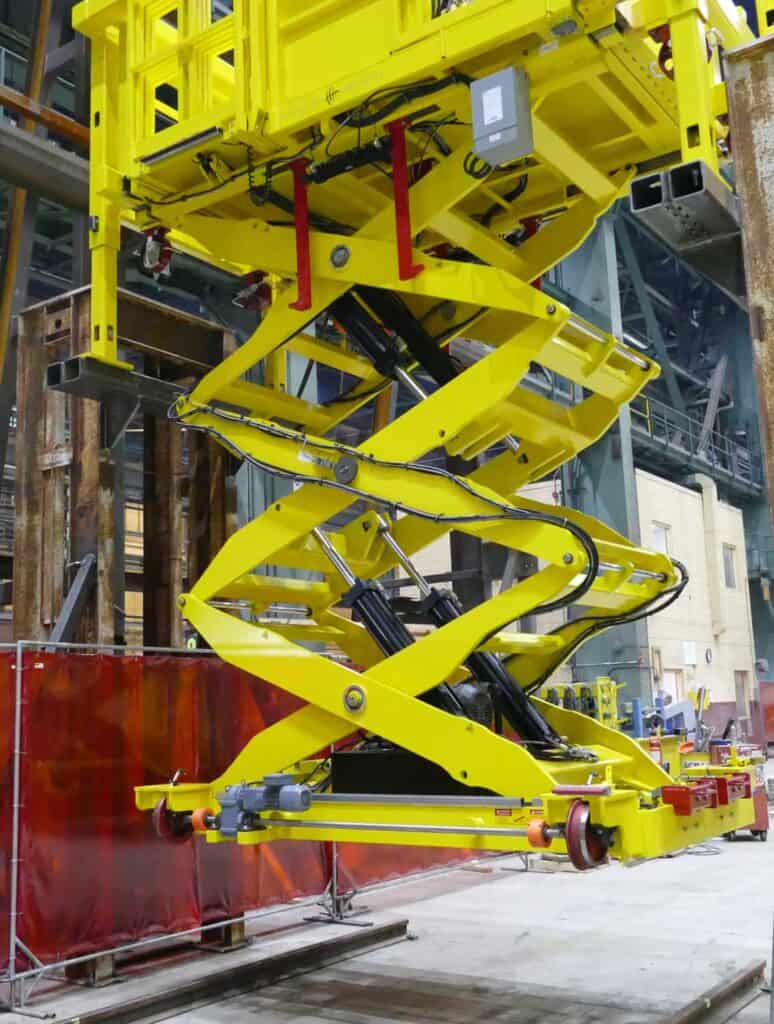
Factors to Consider When Selecting a Scissor Lift
Choosing the right scissor lift is important. Here are some key points to think about:
- Lifting Capacity: This refers to the maximum weight the lift can safely hold. You need to know your usual load requirements to pick a lift that can handle it.
- Platform Size: The platform should be large enough to accommodate the loads you lift or for workers to move around safely.
- Tooling: What special tooling will you require to hold, spin, or rotate your load?
- Lifting Height: Determine the required lifting height. This helps you pick a lift that can reach that height.
- Power Source: Consider whether a hydraulic or electric mechanical scissor lift is better suited for your needs, based on where you will use it and the available power source.
- Mobility: Check how the lift should move or if it will be lagged to the floor or in a pit. Look at your floor plan layout, aisle widths, and how tight it can turn.
Vendor Selection and Procurement Strategies
Choosing the right vendor for scissor lifts is just as important as picking the right equipment. When you select a vendor, keep these factors in mind:
- Reputation and Experience: Look for vendors with a strong track record in the field and consistently positive customer reviews.
- Product Quality and Range: Select a vendor that offers a diverse range of high-quality scissor lifts, tailored to meet various needs.
- Customization Options: Verify if the vendor offers customization options, allowing you to adjust the lift to meet your specific needs.
- After-Sales Support: Learn about the support services available after the sale, including maintenance, spare parts, and technical assistance.
- Pricing and Payment Options: Compare different vendors’ prices and payment plans to find the best deal.
Installation and Maintenance of Scissor Lifts
Proper installation is vital for the safe and effective use of industrial scissor lifts. The installation typically involves securing the lift to the floor, connecting power sources, and verifying that all safety features function properly. Regular maintenance is just as vital.
By following maintenance schedules, manufacturers can prevent breakdowns, extend the longevity of their scissor lifts, and reduce the risk of accidents.
Best Practices for Installation
Adhering to best practices when installing industrial scissor lifts is very important. This helps to ensure they perform well and are safe for a long time. Here are some key practices to follow:
- Site Assessment: Look over the site where the lift will be installed. Inspect aspects such as the floor’s strength, overhead clearance, and proximity to electrical or other utilities.
- Following Manufacturer’s Instructions: Always follow the manufacturer’s installation guidelines and instructions.
- Professional Installation: Hire qualified technicians who specialize in the installation of industrial machinery. This is especially important for complex setups or those needing special equipment.
- Testing and Commissioning: Carefully test the installed lift. Ensure it functions properly and all safety features operate correctly before use.

Regular Maintenance Schedule and Checklist
To keep industrial scissor lifts in good condition, it is essential to have a regular maintenance plan and a complete checklist. A good maintenance schedule should include:
- Daily Inspections: Train operators to do daily lift inspections. They should look for any damage, fluid leaks, or loose parts.
- Lubrication: Ensure that all moving parts are lubricated regularly. Following the manufacturer’s guidelines, this includes chains, bearings, and pivot points.
- Hydraulic System Checks: Inspect hydraulic hoses and fittings for leaks and signs of wear. Ensure that the hydraulic fluid is clean and at the right level.
- Electrical Component Inspection: For electric scissor lifts, check the wiring, connections, and electrical parts for any damage or wear.
Conclusion
Industrial A cost-benefit analysis reveals that these lifts can lead to improved efficiency and a favorable return on investment. With advancements in automation, it is crucial to choose a scissor lift that meets your specific requirements. Proper installation and maintenance can help them last longer. Utilizing mechanical scissor lifts enables manufacturers to maximize the effective use of their space.
Frequently Asked Questions
What are the primary benefits of using scissor lifts in manufacturing?
Mechanical scissor lifts help make work easier and faster. They save space and allow for safer working methods. They can be used in many different manufacturing tasks, which helps boost productivity.
How do scissor lifts improve safety in manufacturing environments?
Scissor lifts help keep workers safe. They do this by providing a stable platform. They also have safety features such as guardrails, sensors, and emergency stops. These features help prevent accidents, promote a culture of safety, and protect the workforce.
Can scissor lifts be customized for specific manufacturing needs?
Yes, scissor lifts can be customized a lot. Their flexible design allows you to adjust them to fit the specific needs of your manufacturing process.
What is the typical lifespan of an industrial scissor lift?
The lifespan of a scissor lift depends on the model, its usage, and the care it receives. If you take good care of a lift, it can offer great value for decades.

